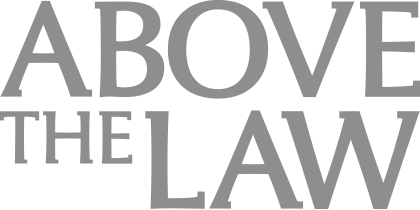Second-Tier Law Schools Feel The Squeeze As They Stubbornly Keep Tuition Rates High
Will public law schools ever get back to their mission?
In a way, I think the schools ranked just below the top schools have felt the decline in law school applications the most. Schools ranked in the top 50, but not the top 15, foolishly charge comparable rates to the very best institutions, but they can’t provide the same kind of employment outcome success as the very top schools. Students either go to the top schools that maybe they couldn’t have gotten into in a more competitive pool of applicants, or they go to get significant cost savings (and maybe a full scholarship) at less prestigious, local schools.
You’d think that the very bottom schools would be hurt the most by the decline in applications, but the Cooley model shows us that the people who don’t do well on tests but are desperate to go to law school are still applying, while there appears to be a brain drain in terms of the most qualified applicants.
The choice for law deans just outside the top tier seems to be to cut class size or massively lower admissions standards. I’d argue that there’s a third option: deans could actually compete on price and start charging a reasonable tuition for legal education. But that option might actually start to solve the problem, and right now deans think that prospective law students not acting like idiots is a temporary condition that they just have to ride out.

Law Firm Business Development Is More Than Relationship Building
Earlier this month, we talked about George Washington’s decision to lower admission standards in order to keep class size high. Today we’ve got a similarly ranked school that has evidently decided to go in the opposite direction — in a big way….
Paul Campos details the long-term shrinkage of the entering class size at the University of Iowa College of Law (ranked #26 by U.S. News and #37 by Above the Law):
Until about six years ago, the school typically enrolled 215 to 240 JD students each year, and had at any one time around 650 to 700 such students in total (Iowa usually loses a few students on net in the post-1L transfer market).
Then a few years ago the school’s entering classes began to shrink, slowly at first, then quite suddenly…
In the fall of 2012, only 155 1Ls matriculated – by far the smallest class the school had seen in decades. Total enrollment fell to 517: nearly 200 less than the 712 students attending the school in 2004. Then this fall the bottom fell out. Although the school hasn’t officially announced its entering class numbers, the university’s on-line enrollment system shows only 95 first-year students matriculated last month. This story essentially confirms that number, as it reveals only 422 students (I assume this means JD students; Iowa does have an LLM program) are enrolled this fall. Total enrollment has declined 41% since 2004, and first year enrollment is down an even more startling 62% since 2004.
Sponsored

Generative AI at Work: Boosting e-Discovery Efficiency for Corporate Legal Teams


Curbing Client And Talent Loss With Productivity Tech

Curbing Client And Talent Loss With Productivity Tech
According to Campos, “[t]otal enrollment has declined 41 percent since 2004, and first-year enrollment is down an even more startling 62 percent since 2004.”
Meanwhile, Iowa’s LSAT percentiles have increased over time — as has its tuition. Per Campos:
Iowa is typical of fairly highly ranked law schools at state flagship universities, in that it has raised tuition drastically over the past ten to fifteen years. In state tuition has gone from $7,100 per year in 1999 to $28,047 this year, while out of state tuition has risen from $17,600 to $49,025.
I would hope that a class size down to 95 represents 0 people who crossed state lines to go to Iowa Law at full price. I’m sure Iowa places a few students in Biglaw jobs in Chicago every year, but outside of those kids, it’s impossible to justify paying nearly $50K a year for Iowa. The economics of carrying that kind of debt around without a top salary just don’t make sense. Iowa law students graduated with an average of $110,000 in debt. Taking on that kind of debt load only makes sense if you are going to plow over your cornfield and make a baseball field for dead people. (You knew I was going to get it in there.)
The thing is, Iowa is a good school. It’s a solid, Midwestern institution that services kids who don’t want to go to the “big city,” and will instead service their communities. They wouldn’t be in this position if their tuition were reasonable. I’m sure that the people at Iowa Law will be quick to point out that their tuition has gone up as state funding of education has gone down. Public schools used to be low-cost alternatives, but now that so much state funding has dried up, many public schools charge more like private schools.
Sponsored

Law Firm Business Development Is More Than Relationship Building

AI Presents Both Opportunities And Risks For Lawyers. Are You Prepared?
That’s a fair argument, if you accept the premise that faculty salaries at public schools need to be on par or competitive with what private schools pay. I do not accept that premise. The lack of state funding for higher education is a huge problem, but the response to that problem could have involved pay cuts just as easily as it involved tuition hikes.
I just fail to see how saddling students with over $100K in debt fulfills the “mission” of any public law school in a small market. It’s a complicated situation, but eventually law school faculties at public law schools are going to have to get some skin in the game if they want law school to make economic sense for their students.
Field of nightmares [Lawyers, Guns & Money]
The ATL Top 50 Law Schools [Above the Law]
Earlier: A Law School Dean’s Painful Decision







